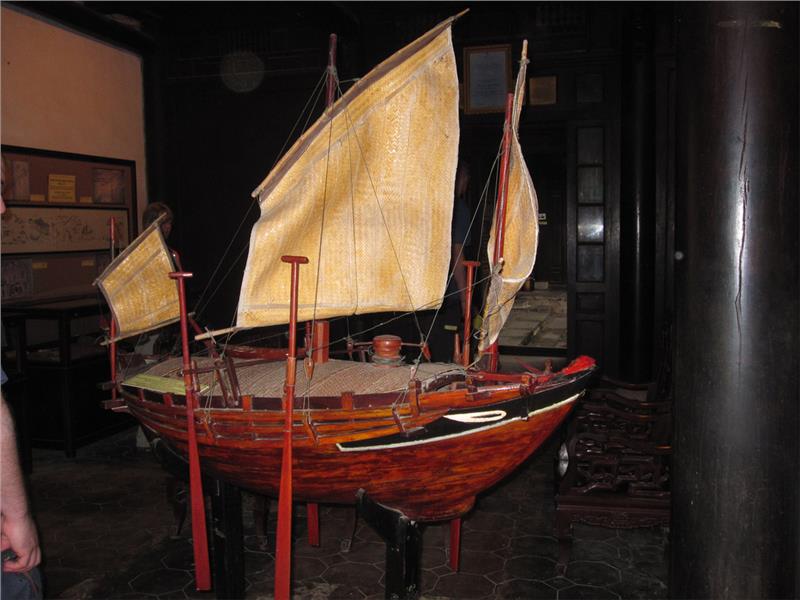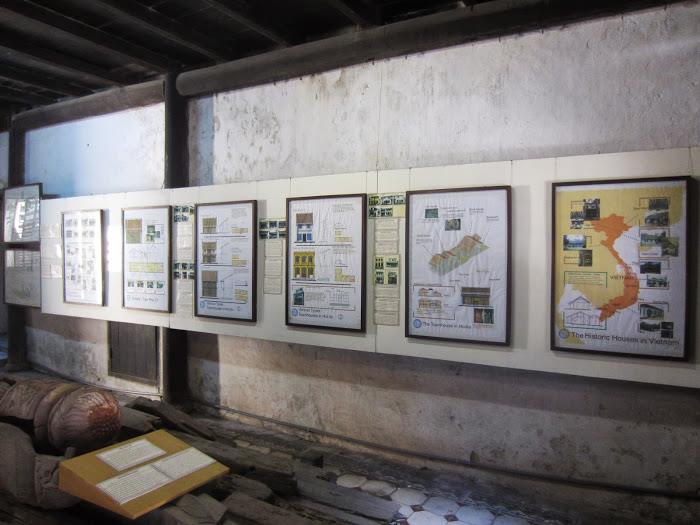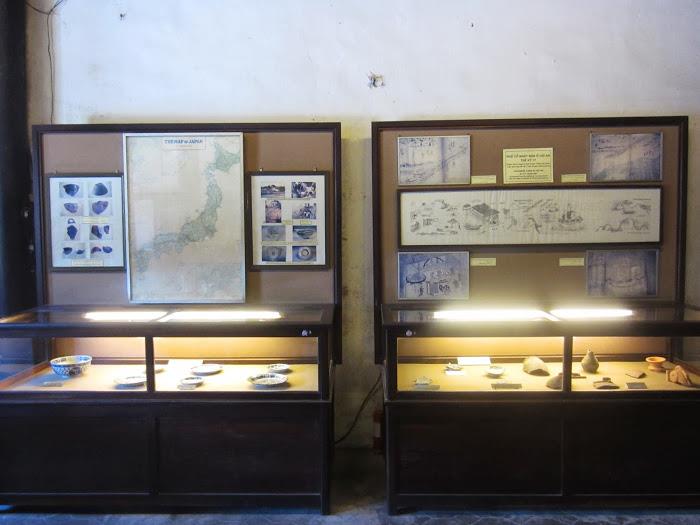Located at No.80 Tran Phu Street, Hoi An Town, Museum of Trade Ceramics which was built in around 1920, is a typical ancient two-storey house with wooden balconies. The thematic museum exhibits ceramic artifacts found in archaeological sites in Hoi An ceramics, which reflected the trade ceramics route on the sea some centuries ago when Hoi An trading port was the trade exchanging convergence on sea of of merchants from East - West - Asia - Europe. These artifacts significantly contribute to promote the museum to become one of the must-see tourist attractions in Hoi An alluring numerous both domestic and international tourists.

Here, tourists can witness the space overall in the typical architecture of ancient houses in Hoi An, which are divided into 3 parts: the front, the rear and the toilet area. The courtyard is arranged in the middle of the front and the back area; meanwhile, the kitchen and toilet area are located behind the main hall. The house was renovated in 1994 and has been used as the Museum of Trade Ceramics. The museum is home to more than 430 artifacts including porcelain dating from the 8th century to the 18th century. Most of the artifacts are trade ceramics originating from the Middle East, India, China, Japan, Thailand and Vietnam..., which shows that intercultural relations and international economy had strongly taken place in Hoi An. This unique feature is one of the most things to do in Hoi An travel.

Located on the World Silk Road, Hoi An used to be one of the transshipment points of goods from China, Japan to India, Netherlands... and vice versa. It also stored a great number of artifacts dating back hundreds of years remaining in the course of trading between Hoi An and other countries. They were the currency of countries and Vietnam at that time. Besides, there were also numerous potteries of Japan, China.... All exuded the wealth once having existed in Hoi An. Here, tourists can ascertain about an ancient map by the Japanese to describe the passageway from Nagasaki to Hoi An, which demonstrates for the former extremely developed relationship between Vietnam and Japan.

As one of the appealing Hoi An attractions, tourists setting foot on the museum will have an overview on busy commercial activities of Hoi An at that time. In particular, the popular type of product cannot fail to mention, namely ceramic items, teapot or exclusive bottle... Notably, Vietnam retained ceramic pottery much more beautiful than Japanese pottery in 17th century. It was the reason why the wealthy Japanese families usually hold ceramics of Vietnam. Ceramics in Vietnam once had great influence on the production process of Japanese pottery. Based on the trade ceramics map at the museum, tourists can see the development of ceramic trading around the countries such as India, Japan, and China... They are substantiated thanks to the antiques found right in these countries.

Even the architecture of the museum is also extremely special. Formerly, the museum was a shop and strongly influenced by the Japanese tube-shaped houses. There are also scientific evidences about the rational and scientific of the tube-shaped houses studied by the foreign experts. A hollow cavity at the bottom of the second floor of the ancient house once used to transport goods. At middle of the house is a skylight with sculpted features of carps or bats expressing the concept of the life and luck of the ancient inhabitants.
The museum has also maintained many parts of the ancient merchant ships of the traders to Hoi An, which are preserved relatively intactly. This was testament to the important role of the Hoi An trading port in the ceramic trade network on the sea in the regional and international market centuries ago as well as the exchanges, cultural contacts and economy which used to strongly take place in Hoi An. In particular, tourists can go shopping with numerous handicraft items of traditional villages sold here. Museum of Trade Ceramics will certainly be an appealing attraction for tourists on their journey of discovering Hoi An tours.
